
The perfect en-suite radiator/towel rail
If you're lucky enough to have an en-suite or second bathroom in your home, you'll know that these spaces are often require smart, space-saving design choices to make the most of every inch.
Now that December is upon us, there’s really no time to lose in terms of planning your Christmas entertaining. For most of us, the festive season means spending time with friends and family. Thanks to the rise in popularity of open-plan living, kitchen dining is likely to be a big focus throughout this month. The key advantage of this sort of space is that it tends to be much more sociable and inclusive. But it also needs to heat efficiently in order to keep things warm and welcoming. Nobody wants their guests to be shivering over their starters!

If you’re keen to create a cosy kitchen dining environment, that doesn’t compromise on style, help is at hand. We asked interior designer Justyna Kelly, who owns Interiors By Justyna, for her expert advice on how to create the perfect kitchen dining heating scheme. Read on to discover how to get the heart of your home ready for the most wonderful time of the year!
Interior designer Justyna Kelly: Function, placement and style are the three key criteria to consider when choosing a heating system for open plan kitchen/living spaces
“There are three main aspects to consider when designing a heating system in an open-plan kitchen, as well as any other space,” Justyna explains. “These are function, placement and style.” As you’d expect, function is the most important (and complex), because ultimately your heating system needs to perform its primary job as well as possible. Yet it also needs to fulfil various other criteria in a home, and it’s these criteria that often influence the final decision.
“Underfloor heating is very effective and discreet, but radiators are more flexible,” Justyna notes. “That’s because radiators can work independently, so you choose which areas to heat. They can therefore present a more environmentally friendly solution.”
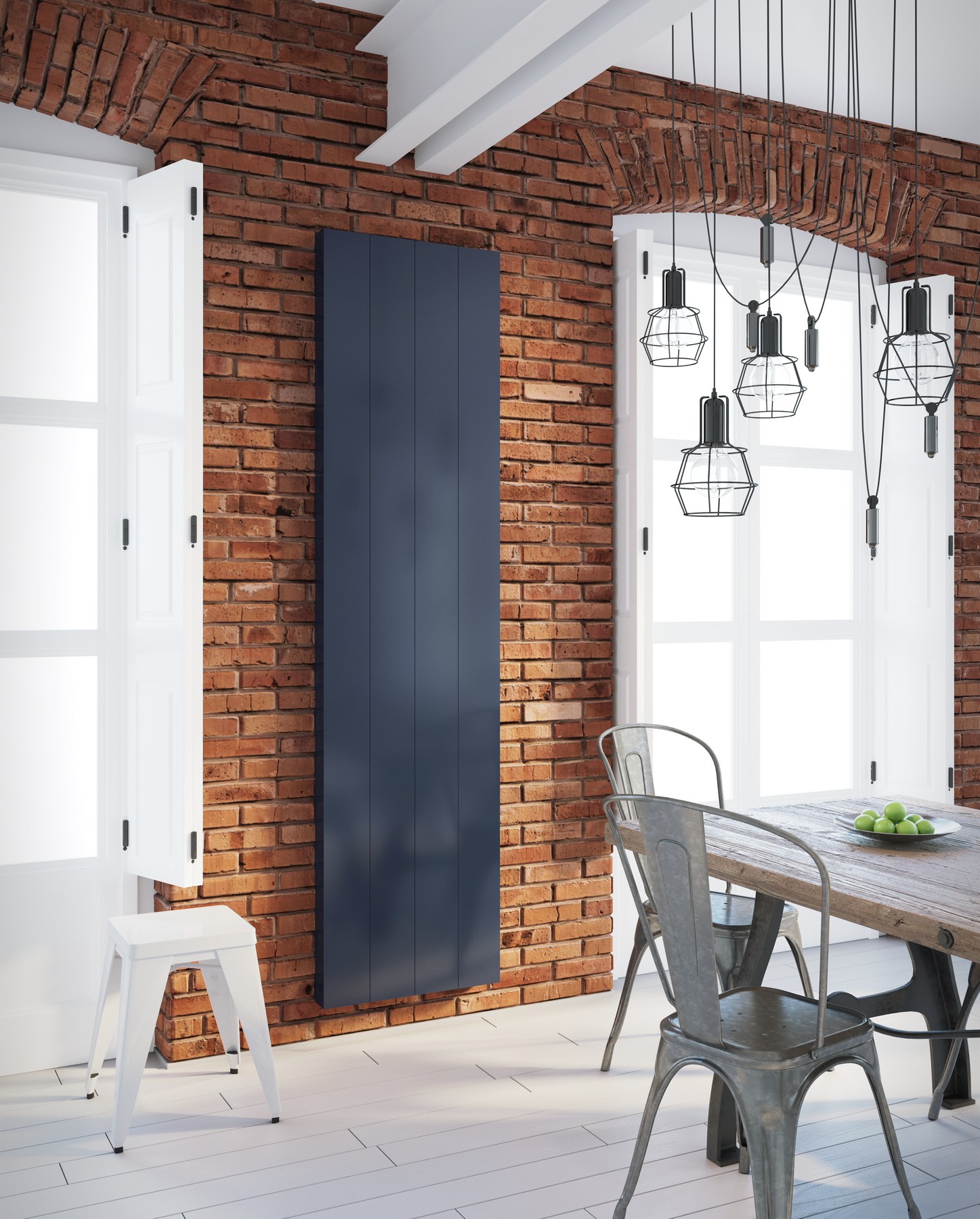
Justyna continues: “If reducing your carbon footprint is a top priority, electric radiators are strong contenders. An electric system produces less pollution. It’s also considered very energy-efficient, safe and easy to install, at a lower cost (no pipes required). It also works the quickest. However, it could be more expensive to run than gas…But do consider modern technology. Controlling your heating via Wi-Fi from anywhere in the world can be both ecological, economical and convenient.”
Electric radiators, such as our Vela Electric model, are super versatile, energy-efficient and heat up quickly. This is perfect for when guests pop round over the Christmas period!
When planning the heating for your kitchen dining space, location is key. A lot of the ‘old’ rules no longer apply. Justyna explains: “With modern insulation and double or triple-glazing, radiators don’t necessarily need to be placed below windows anymore. This allows for much more flexibility. However, their placement needs to fit in with the layout and contents of the room.”
Practicality is key, especially if you’re planning some traditional family TV viewing or Christmas carol sing-alongs. Never fit radiators too closely to a TV or piano, as the heat they emit could cause damage to them. Don’t install them too closely to ovens either, which themselves act as sources of heat.
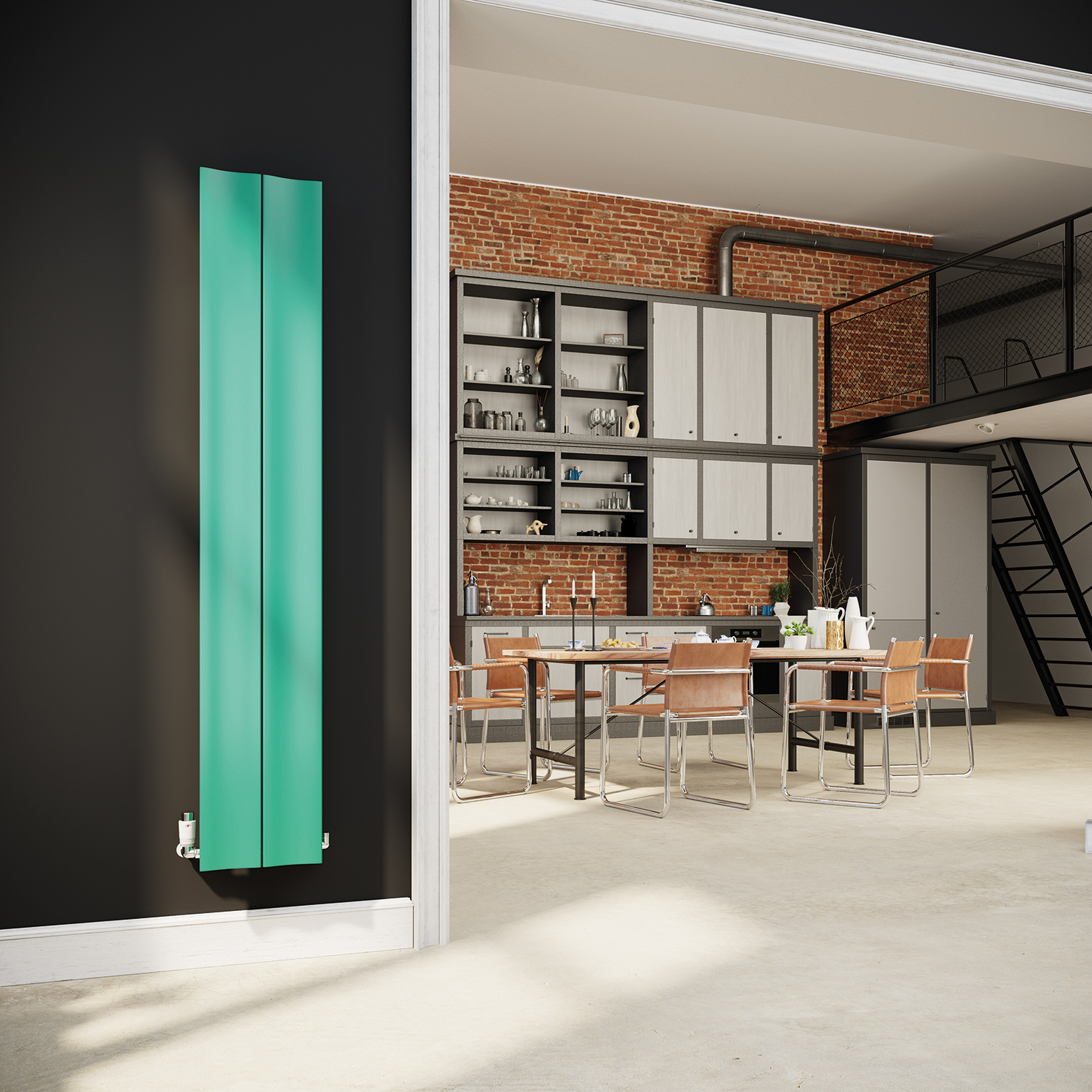
Instead, think hard about your room’s ‘dead’ spaces. “Radiators can often be fitted in awkward places or narrow passages,” agrees Justyna. “And they needn’t occupy space which could otherwise be taken by other objects or furniture. Then there are the aesthetic reasons to consider. Do want your radiator to be a stand-out feature, or to blend in with the rest of your interior? A lot can depend on where you put it!”
Don’t be afraid to make your radiator a key part of your décor – especially in a communal area like a kitchen diner. Our stylish Ruvo radiator, made from 100% recycled aluminium, adds instant ‘wow’ factor to any entertainment space
Rooms that are used for entertaining obviously have different requirements to other areas of your home. External factors are another element to consider when choosing your heating system.
“Open-plan kitchens tend to be large spaces. They often have tall ceilings and a lot of glazing, such as bi-fold doors and glass roofs,” Justyna observes. “This makes them hot on sunny days, but really chilly during winter evenings. They get cold quickly and warm up very slowly. For those reasons, fitting an efficient heating system is particularly important in open-plan kitchen diners.”
She adds: “When a lot of people want to spend time together in a family-orientated space, you want to ensure that everyone is comfortable in each section of the room. Choosing a flexible option (such as gas or electric radiators) can make it easier to adjust to the circumstances and requirements. Factors could be the number of people or areas currently being used.”
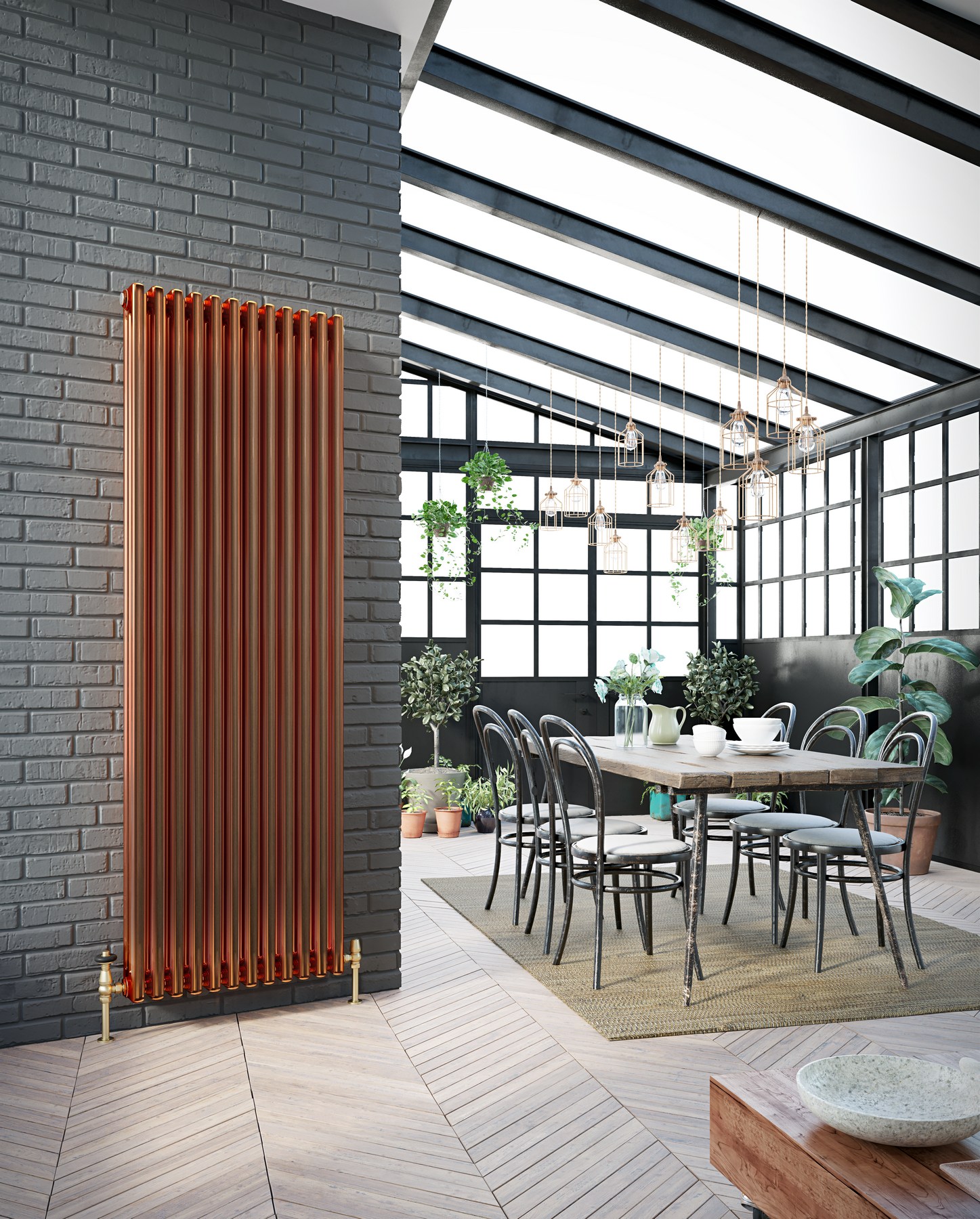
As with all rooms, the size of your kitchen dining environment is a key thing to consider in terms of heating solutions. But layout matters too. “In addition to size, room shape, ceiling height, and the amount of glazing should all determine the number and size of the radiators you need,” explains Justyna. This is where a BTU (British Thermal Unit) calculator can be really helpful.
Go large: interior designer Justyna recommends installing one or two larger radiators, rather than lots of smaller ones. Why not make an impact with our Modus Made To Measure model?Available in a choice of two to six columns, there’s also a wide selection of sizes with a variety of finishes, including lacquered featured here
“This calculator allows you to input all relevant parameters of your room. It works out how many output units (BTUs) you will need to heat it up,” notes Justyna. “It will give you a good idea about the number and size of radiators required. It’s best to ask for expert advice from a reputable manufacturer too, before making any final decisions….If possible, choose one or two larger radiators, instead of lots of smaller ones. This will save you space, and could be more aesthetically pleasing.”
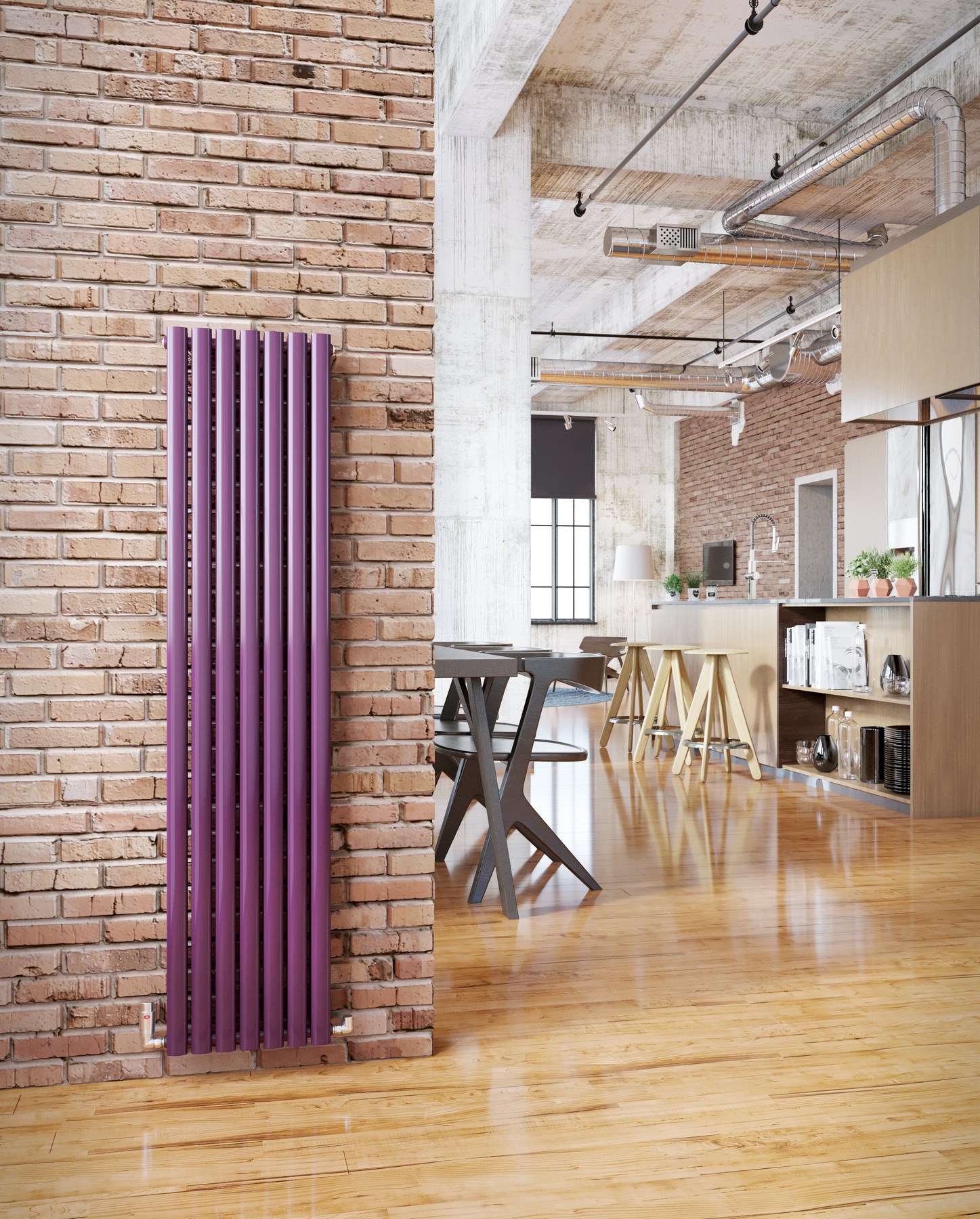
There are no rights and wrongs in terms of radiator styles. We all have our own personal preferences, So, be honest about what you like, and what would suit the style of your kitchen dining area.
“Choosing the look of your radiators is the most fun part,” Justyna emphasises. “Do you prefer traditional or modern? Bold features or discreet styling? What about finishes: will you go for lacquered, brushed steel, brass, copper or stainless steel? There are so many colour and size options, the possibilities really are endless.”
We might be dreaming of a white Christmas – but that doesn’t mean our radiators have to match! Coloured models continue to grow in popularity. What do you think of our Cove model, showcased here in a bright pop of purple?
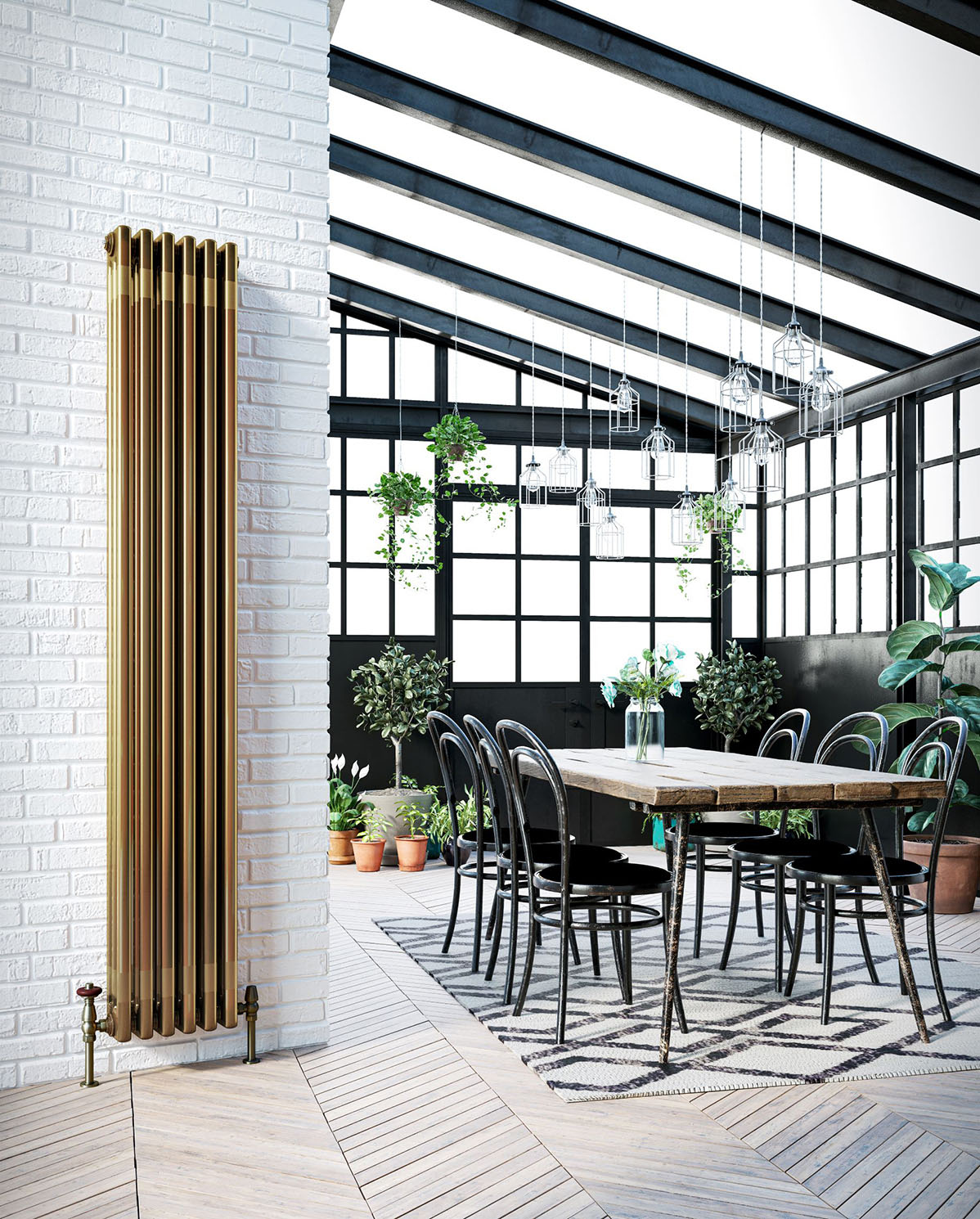
That said, traditional styles work equally well within both modern and period settings. “Cast iron, floor-mounted radiators are enjoying a revival,” Justyna agrees. “But it’s very fashionable to give a classic radiator a modern twist through the finish or colour. The range of available options has grown immensely in recent years, allowing clients to choose from a wide range to suit their exact needs. In addition, people are becoming more conscious of the ecological aspect of their selections, in terms of the materials used to manufacture radiators, as well as their efficiency and impact on the environment.”
Our Modus made to measure column radiator is available in both vertical and horizontal versions. It works equally well in both classic and contemporary kitchen diner settings. We just love this brass finish!

One of the key trends to emerge in recent years is the rise of vertical radiators. It’s not hard to understand why. “In addition to being brilliant heat emitters, vertical radiators are flexible to fit in awkward places, so they are excellent space-savers,” notes Justyna. “With the appropriate placement, colour and finish, they can either blend into your interior, or stand out as real statement pieces.”
She adds: “Kitchen diners, especially those created through a side return in Georgian/Victorian town houses, or in industrial-style homes such as converted warehouses, lofts, and power stations etc, tend to have a modern vibe that’s well suited to the vertical radiators aesthetic.”
When vertical radiators look this good, it’s hardly surprising they’ve become so popular! Our Delta model features slimline panels of either brushed or polished stainless steel– and comes with an optional towel bar that’s ideal for kitchen diners
Whichever style you do go for, buy the best you can afford – especially for an open-plan entertaining space like a kitchen diner. “Don’t scrimp on your radiators, and then try to hide them,” counsels Justyna. “Invest, choose beautiful ones, and show them off! Nowadays some models look just as good as modern sculptures.”
Are you finding your current radiators and towel rails need a little maintenance to get you through winter? Then read our blog on how to bleed a radiator now.